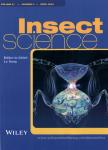Polymorphisms in salivary-gland transcripts of Russian wheat aphid biotypes 1 and 2
Polymorphisms in salivary-gland transcripts of Russian wheat aphid biotypes 1 and 2作者机构:Department of BiochemistryKansas State UniversityManhattanKansasUSA State Key Laboratory of Integrated Managementof Pest Insects&RodentsInstitute of ZoologyChinese Academy of SciencesBeijingChina Department of EntomologyKansas StateUniversityManhattanKansasUSA CSIRO EntomologyCanberra CooperaEve Research Centre for Plant BiosecufityCanberraAustralia
出 版 物:《Insect Science》 (昆虫科学(英文版))
年 卷 期:2012年第19卷第4期
页 面:429-440页
核心收录:
学科分类:0710[理学-生物学] 0830[工学-环境科学与工程(可授工学、理学、农学学位)] 07[理学] 09[农学] 0904[农学-植物保护] 071007[理学-遗传学] 0901[农学-作物学] 090401[农学-植物病理学] 090402[农学-农业昆虫与害虫防治] 090102[农学-作物遗传育种] 0713[理学-生态学]
基 金:the Grains Research and Development Corporation (Australia) supported by the CRC for National Plant Biosecurity (Australia) the Kansas Agricultural Experiment Station
主 题:biotype molecular marker polymorphism Russian wheat aphid salivarygland transcript
摘 要:The Russian wheat aphid (RWA), Diuraphis noxia (Mordvilko) (Homoptera: Aphididae), is a major pest of small grains. As with plant-feeding aphids in general, the interaction between RWA and host plants is governed, on the insect side, by proteins and enzymes in saliva. In this work, we examined sequence variations in transcripts encoding proteins and enzymes of RWA salivary glands. We conducted reverse transcription - polymerase chain reaction in RWA biotypes 1 and 2 using primers derived from pea aphid orthologs, and cloned regions of 17 putative salivary gland transcripts. For four of the transcripts, we observed no difference in sequences between the two biotypes. For the other 13 transcripts, for example, the transcripts encoding sucrase, trehalase and protein C002, large amount of variations, both within each biotype and between the two biotypes, were observed. Usually the two biotypes shared only one variant, which was typically the most common variant in both biotypes. Most of the transcripts had more non-synonymous than synonymous codon changes among their variants. Our results offer possible molecular markers for distinguishing the two biotypes and insights into their evolution.



